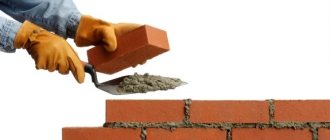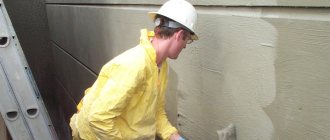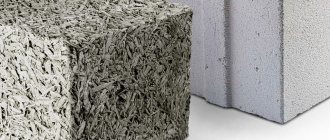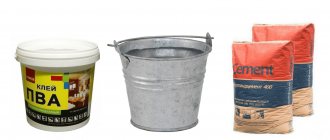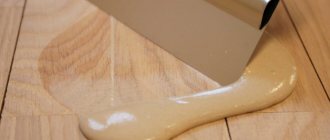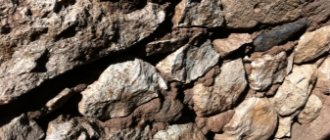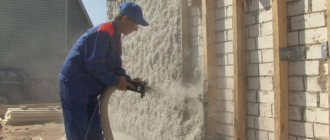Brick buildings are considered one of the most durable and high-quality. However, due to an incorrectly prepared solution, all work can go down the drain. After all, it is important not only to follow the masonry scheme, but also to make a high-quality batch.
The stores offer a wide range of ready-made masonry mixtures, which can be selected depending on the specific construction requirements. However, when it comes to larger projects, builders prefer to prepare the compositions themselves.
Specifications
The composition of such a solution must include cement, sand, slaked lime and water.
It is worth paying attention to the fact that it is slaked lime that needs to be added. Otherwise, the quenching reaction will begin in the solution itself when water is added, and bubbles, forming inside the solution, will lead to cracking of the plastered surface
This process of bubble formation will lead to deterioration in the quality of the solution and to brittleness after it dries.
Construction mixtures, their composition and properties are regulated by various GOSTs. This is necessary for standardization and regulation of norms in construction. GOST 28013-98 is the main legal act regulating the technical requirements for building mortars and materials included in the composition.
This standard also includes characteristics of quality indicators, acceptance rules and conditions for transportation of finished solutions. It contains the qualitative and quantitative characteristics of masonry mortars, materials for plastering and for interior work, used in various operating conditions.
Components
The main components of the mixture for laying bricks are: lime, cement, clay or gypsum, sand, water, additives. What role does each of them play? Cement, lime, clay and gypsum act as binders. They are responsible for hardening. Compositions that include one binder component are called simple, while two or more are called complex.
Most often, a cement-based masonry mixture is used for brick walls and houses. It is best to take cement grade M 400; in general, the higher the grade of cement, the lower its consumption. The cement has sufficient rigidity and strength. There are also lime, cement-lime and cement-clay mortars. Many people believe that cement mortar is better than others for any type of masonry, but this is not true. In some cases it will be too rigid and overly strong. Mixtures for bricklaying of other compositions have their own application characteristics.
Important! Portland slag cement is not used for construction in cold weather. A solution based on it at low temperatures turns out to be of poor quality.
For walls that bear a small load, such as fences and interior partitions, lime mortar is used. It shrinks slightly and has low thermal conductivity, that is, it retains heat well, but after hardening it becomes brittle. This limits its scope of application. It is also used to repair walls.
To prepare such a mixture, crushed quicklime is used. The composition is made warm, it turns out to be more plastic than cement, and does not harden longer. A composition using lime and cement is used for various structures; its advantage is that it has better thermal insulation ability than cement.
The cement-clay composition is the least durable of those listed. It is used for working with stone, brick, ceramics, for example, for laying stoves. It has high frost resistance, is durable and cheap. To prepare it, it is important that the clay is cleared of impurities and foreign inclusions (stones, roots).
Compositions with a large proportion of the astringent component are called fatty, while those with a smaller proportion are called normal or lean. The ratio of ingredients in normal mixtures is optimal in terms of price and quality.
Sand plays the role of a filler; it increases the volume and improves the mechanical properties of the mixture. Sometimes other ingredients are used for this, such as gravel, expanded clay, and polystyrene granules. Usually they are used not for masonry, but for pouring mortars. The sand should be fine, without impurities (garbage, clay, soil, roots), it is best to use river sand. Bright yellow sand should not be used in facing masonry or for bricks with cavities.
Water is the most important component of masonry mortar. Many characteristics of the composition depend on its quality, therefore the requirements for water are specified in GOST 23732-2011. To prepare the solution, the water must be clean, with a temperature within 15-20 degrees.
Additives may include:
- plasticizers - they make the composition more plastic and easier to work with; they are necessarily added to the mixture for laying facade bricks;
- hardeners – accelerate the hardening (polymerization) of the mixture;
- anti-frost additives - do not allow the mass to freeze at sub-zero temperatures, giving it the opportunity to harden well;
- pigments - color the solution in the desired color; if you need to get a dark-colored mixture, you can use soot or graphite.
Options with various additives are more economical and easier to work with, so it is better to spend time and prepare a mortar for bricks with improving additives, and then make the masonry faster and with better quality.
Cement mortars
Cement is prepared from a mixture of ordinary cement and medium sand. The proportions can be different, they depend on the brand of cement used and can be: for one part of cement, take from three to six - sand.
Mix the dry mixture with the addition of water until a homogeneous mass is formed.
First, the dry mixture is mixed, then water is gradually added, then everything is mixed until a homogeneous, thick mass is obtained. But this option is not the best, since ordinary cement is inactive, even when using any brand it turns out to be too hard and too strong.
The cement-lime composition for bricklaying consists of lime and cement. The cooking process is as follows:
- Slaked lime, that is, lime dough, is diluted to the state of thick milk, and then filtered through a sieve.
- A dry mixture is prepared based on sand and cement, which is dissolved with lime milk, after which it is thoroughly mixed. Adding lime can increase the plasticity of the resulting mixture; this mixture is recommended for use for laying any type of brick.
Simple masonry mortar
The simplest solution is prepared from a binder (it can be ordinary cement or lime) and sand. In some cases, clay can also act as a binder, but this is very highly specialized work that is not performed very often.
The most common cement-sand mortar has the following proportions: one part of cement to three of medium-fraction sand. The resulting mixture is thoroughly mixed first in dry form, after which plain water is gradually added to it. Stirring is carried out until the resulting composition acquires the proper density and mobility.
Checking such characteristics is not so difficult: the container in which the solution is mixed must be tilted at an angle of forty degrees; if the mixture does not pour out, then you can begin the masonry process.
Complex installation solution
The solution should not spread or slide well off the surface.
A complex brick mix is a mixture of several components and a binder material that affects the physical characteristics. Among such complex mortars for brickwork, cement-lime-clay, cement-lime and others are used, thanks to which the masonry is simpler, but also reliable.
Clay, for example, is added to make the composition more plastic. It does not fall apart during operation and is installed very neatly and easily. The use of plasticizers makes the brick mixture indispensable when laying facade walls. This mixture is very economical, it provides uniform compaction, and when spread, it is conveniently leveled over the surface of the previous row. Therefore, many experts recommend spending a little more time preparing the solution, but then this will only help in the work.
Viscosity classification
Based on this indicator, masonry mixtures are divided into three so-called mortar groups:
- Group 1 - in this case, the role of the main binding component is performed by lime. Such solutions are not subject to any requirements for compressive strength. They are recommended for use in buildings up to 2 floors with a wall thickness of at least 24 cm.
- Group 2 – two binder components: cement and lime. Mortars of this type meet all compressive strength requirements. They are widely used for internal and external walls that experience normal loads.
- Group 3 – only cement is used as a binder. These are high-strength solutions that are used for buildings with high loads (pylons, loaded supports, etc.).
Healthy! There is also a subgroup 3a, which meets the highest requirements, which means that cement can only be used of a high grade.
Mixture proportions
There is a classic version of the mixture, which is determined by the ratio 1:3 - 1 part cement and 3 parts sand. Both components are first mixed dry with each other, and then water is added to this mixture in portions. All this is thoroughly mixed until a solution is formed, the consistency of which is similar to thick sour cream. Be sure to give the finished mixture 15 minutes to thicken, after which it is mixed again.
By the way, the cement-sand mortar “lives” for no more than 1.5 hours. After which it begins to lose moisture and dries out. So a small batch is a justified decision.
To mix the components, it is recommended to use a construction mixer or a drill with a special attachment. If you need a large volume of material, for example, to pour a foundation, then we recommend carrying out the preparation process in a concrete mixer
Please note that the end result is a lump-free composition in the form of a homogeneous mass
Sand for masonry mortar
Main ingredients of the solution:
Cement is a binding component. It must be in paper bags. It is recommended to buy it before starting construction processes. That is, it must be “fresh”. After all, during long-term storage this material cakes, which means it loses its qualities. Sand is a filler. There is one point regarding quality here. There should be no foreign materials in the sand. This is especially true for clay. Therefore, it is recommended to purchase river sand
Pay attention to the fraction of the material. For example, fine material promotes the spreading of the mortar, so it is not used for masonry mixtures. But in screed mortars, such sand is an ideal choice
The coarse fraction is not used for preparing plaster, although it works great in foundation mortars. Water is the basis, so it must be clean. The main requirement for it is the absence of acid and oil impurities.
Features of choosing a brand of solution
Now you can move on to the proportions and understand such an indicator as the brand of solution:
- The masonry composition is grade M100. It is used in the construction of walls and barrier structures made of bricks or blocks based on different materials. To do this, you will need M400 cement and sand, which are mixed in a ratio of 1:4.
- To increase the strength of the masonry, you can use M200 grade mortar. To do this, you will have to reduce the amount of sand by 2 times.
- To level the floor bases, the M300 grade of mortar is used. To do this, you can use cement M400 or M500 with the addition of water and sand in a ratio of 1:3:0.5.
- To plaster the walls, use exactly the same solution as above, only with a slight increase in the amount of cement. For example, it could be 1.2-1.5. Plaster mortars are often made with the addition of lime milk. This reduces the strength of the material, but increases its ductility. In this case, the cement-sand-milk ratio will be 1:5:2.
Standard proportions
Making the solution in the correct ratio
There are certain technological standards that regulate the ratio of building mixture components. Here are three examples:
- To prepare the screed solution, use proportions of 1:2-1:6. In this case, the amount of water is not indicated, but only the cement-sand ratio is indicated.
- In low-rise construction, 1:3 or 1:4 solutions are most often used.
- For erected structures - from 1:3 to 1:6.
Why don't the standards specify water? The fact is that it is easy to make a mistake with the volume of water. After all, the sand may be wet, and it is impossible to determine the degree of humidity at home. At the factory, this indicator is strictly controlled. What can you offer to those who use handmade solutions? To do this, it is better to double the batch if the first one turns out to be liquid. Just add cement and sand to it according to the standard, but reduce the amount of water.
3be072818ab0367a28183b8064b824bf.pic
Today, facing tiles and stone are placed on ready-made adhesive mixtures, which greatly simplifies the process of preparing the composition. But since we are considering all cement-sand mortars, we should not ignore this masonry material. Let's just designate the proportions - 1:2.4:0.4. This is such a non-standard ratio.
Many people ask a question regarding determining the volume of one serving. What means and instruments can be used to measure the required amount of material? Construction stores sell special measuring buckets, with the help of which the building mixture is measured or weighed.
Features of materials preparation
To make the masonry durable you need to use:
- Only clean, cold (temperature should be 15-20 degrees) water (preferably distilled). There should not be any oily impurities in it.
- The cement you bought before starting construction work. If you save money and use old cement, there is a high risk that the solution will not be able to gain the necessary strength.
- River (or even better, quartz) sand. At the same time, it should not contain any foreign inclusions. High-quality sand is easily recognized by its gray color. But beautiful yellowish sand, on the contrary, is better not to use. This shade is given to it by clay, the inclusions of which are completely unnecessary in the mixture (such sand is also called mountain or gully sand). Sand is also used for brickwork, the fraction of which is at least 2 mm.
Healthy! Sea sand is never used for preparing building mixtures, as it contains too much salt.
You will also need containers and other products for preparing the solution:
- Mortar mixer or large container. Mixing can be done manually, but it is better to use automatic mixers.
- Several buckets of 10-12 liters. If you have large-scale work ahead, then they are very convenient for measuring the components of the solution. For a small project, you can use a regular shovel for this.
Requirements for masonry mixture
The requirements for masonry mortars are described in detail in GOST 28013-98. According to this document, the following requirements apply to mortar mixtures:
- the composition must have a high degree of adhesion to brick and other substrates;
- withstand large amounts of freezing and defrosting;
- to ensure that the masonry does not collapse under the influence of atmospheric influences and temperature changes, the masonry mixtures must have high water resistance;
- due to the plasticity of the mortar, during the laying process, it becomes possible to timely adjust the position of the masonry material, which significantly increases the quality and productivity of the work;
- water-retaining properties prevent decomposition of the mixture and precipitation of heavy fractions;
- the strength characteristics of the composition are decisive in the calculation of building structures. This parameter shows what maximum loads the material can withstand. The brand of the solution reflects its strength in kgf/cm2.
Failure to comply with these requirements leads to the formation of cracks in the brickwork, increased consumption of the mortar mixture, increased thickness of the joints and reduces work productivity.
Lime solutions
Lime-based solutions are inferior to their counterparts made with the addition of cement in terms of strength. To create a lime mixture, quicklime or ground lime is used; lime paste is also suitable. To prevent lumps from forming, it is worth using a sieve with 1x1 cm cells. If the cells are larger, they will allow small lumps of substance to pass through, and smaller ones are difficult to work with because of their tendency to clog.
Mortar
Quicklime slaking scheme
Important! Lime is mixed with water and sand until a homogeneous mixture with high plasticity is obtained.
Lime-based mortars do not have very high strength characteristics; for this reason, they are rarely used to create building structures made of bricks. Most often, such a mixture is relevant when constructing stoves, chimneys and fireplaces, since lime mortar can withstand temperature changes well, while other varieties are prone to cracking under such conditions.
How to lay bricks correctly
Now, despite all modern construction technologies, a person who knows how to lay bricks quickly and correctly is very highly valued. So why don’t you join in the craftsmanship of masons? Knowing how to lay bricks correctly, you will be able to independently erect various residential and commercial buildings from this material on your site.
Making sawdust concrete with your own hands
Independent production of lightweight concrete composite is carried out according to the following algorithm:
- The necessary materials are being prepared. There is no need to purchase components in advance. All components can be prepared immediately before production by visiting stores or building materials warehouses, as well as using waste from woodworking enterprises.
- The ingredients are mixed according to the proportions. Mixing of components can be carried out mechanically using a concrete mixer or manually using shovels. Automation of the technological process through the use of a concrete mixer increases productivity, improves mixing intensity, and has a positive effect on product quality.
- Molding is in progress. The group molding process is predominantly used, when the pre-mixed composition is poured into several dozen molds. Single and group forms of collapsible design are used, made of wood 2 cm thick and upholstered in metal or plastic. The use of polyethylene film makes it easier to remove finished products.
- The finished product is dried naturally. The molds are removed 4–5 days after pouring by loosening the wing nuts, removing the threaded rods and disassembling the molding box. The natural drying process lasts, depending on the type of wood, up to three months, during which the moisture concentration is significantly reduced and the product acquires operational strength.
Standard composition of concrete with sawdust: cement-sand mixture, wood shavings, lime (if necessary)
Requirements applicable to a quality solution
Any masonry mortar for bricks must meet certain requirements and meet certain parameters.
There are three most important rules for such compositions that cannot be neglected:
The mixture must have good plasticity; how it will fill voids in the masonry depends on this indicator.
When producing the mixture, it is necessary to take into account all proportions and nuances in order to optimize the setting time. The time during which cement mixtures retain their elasticity should be approximately one and a half to two hours, but if necessary, it can be increased by adding lime.
The mixture must be mixed in such a way that it retains its strength after complete hardening and hardening, otherwise the masonry may become deformed.
In the photo of the masonry mortar you can see how it looks in its finished form and already in a hardened state in the masonry itself.
Why are plasticizers needed?
Plasticizer is a special compound added to the solution to increase its plasticity and elasticity.
Beneficial effect of using a plasticizer:
- Reducing the amount of water that impairs the hardening of the solution.
- Increasing the moisture resistance of the seam.
- Increased frost resistance.
Plasticizers have different purposes:
- Catalysts. Serve to speed up and increase the strength of the hardening of the solution.
- Modifiers. Allows you to obtain additional capabilities of seams - greater resistance to mechanical stress, moisture resistance, etc.
In addition, plasticizers make it possible to obtain a more elastic seam that compensates for thermal expansion of the cladding. This ability helps maintain the strength of connections with the load-bearing wall and prevents the appearance of cracks in the seams that can accumulate moisture.
Kneading
The following devices can be used to mix the DSP:
- Concrete mixer.
- Construction mixer.
- Shovel
It is important to consider that the mixture can only be used for its intended purpose during the first hour. Otherwise, it will harden and become unusable.
In order to save materials, you need to correctly calculate the volume of solution in order to rationally use the composition. Depending on the stage of repair or construction work, the DSP is diluted to the correct consistency.
If it is necessary to plaster the surface, the solution is given elasticity and cleaned of lumps or abrasive particles. Often a cement-lime composition is used, which is characterized by practicality.
Universal mixtures are in demand for the following tasks:
- Pouring concrete base.
- Construction of premises of varying complexity.
- Plastering.
- Masonry work.
- Sealing seams, voids and cracks.
The addition of additional components contributes to the emergence of the following operational advantages:
- Wear resistance.
- Water resistance.
- Resistance to negative temperatures.
- Strength.
- Reliability.
- Durability.
- High adhesive properties.
Making your own solution
First you need to slak the lime for the plaster so that it is suitable for work. This requires a metal container, since the reaction is accompanied by a large release of heat and an increase in volume by 3 times. The lime packaging indicates the slaking speed: slow (25 minutes or less), fast (8 to 10 minutes), medium, 15 to 20 minutes. It is better to mix the mixture with a shovel or oar. Slaking is carried out for at least a day, however, ideally use lime that has been standing for a month.
The note! The sand also needs to be prepared before preparing the plaster: remove impurities, clean it by passing it through a sieve.
Instructions for creating a limestone-sand mortar:
- Sand is mixed with lime paste in the selected proportion. This is done dry and mixed thoroughly.
- After which water is gradually added to the container. There is no need to pour in the entire volume at once; it is poured in in a thin stream, and the solution is constantly stirred.
Now that the preparation is complete, you can begin plastering the surface.
Universal option
Cement-sand mortar according to the recipe given below can be used in many construction works.
To make a solution, you first need to prepare all the ingredients: cement, sand, water, detergent, which plays the role of a plasticizer. Detergents such as dishwashing liquid or liquid soap are a cheap substitute for special additives. They increase plasticity; add them in the amount of 1 teaspoon per bucket of cement. The grade of cement should be M 400 or M 500, sand with a fraction of 2 mm.
The proportions depend on the purpose of the composition. A mortar of grade M25 with a 5:1 ratio of sand and cement is used for most work, but for critical places where special strength is required, for example, for foundations, plinths, grades M50 (with a ratio of 4 to 1) and M75 (3 to 1) are used. .
A solution of grade M25 is prepared as follows. 1 cubic meter is obtained from:
- 2064 kg of sand;
- 268 kg of cement;
- 340-350 liters of water.
Usually the dry ingredients are mixed first and then diluted with water, but you can do it differently. First, pour water into the concrete mixer, and then gradually add the dry ingredients. This sequence will allow you to better control the thickness of the mixture.
First, detergent is poured into the water poured into the concrete mixer. After stirring for a few minutes it will foam. Next, sand is poured.
Attention! First, only half of the sand is poured.
After sand, add cement and mix until smooth. Then add the remaining half of the sand and mix thoroughly again. As a result, the consistency of the mass should be like thick sour cream. Checking the thickness of the mixture is simple: if you run your finger over it, there should be a clear trace that does not blur.
After mixing all the ingredients, stir them for 2 minutes. After this, the mixture is ready for use. To prevent the cement from delaminating, it also needs to be stirred occasionally during work.
You should not prepare a lot of working mixture at once. Remember that within one and a half to two hours it begins to harden and becomes unusable due to loss of plasticity.
What is lime plaster
Adding lime to solutions can significantly increase the ductility and crack resistance of plaster. It becomes much easier to work with, it does not dry out as quickly, it even sticks easily to wood, and the surface is smoother and free of defects. It also provides excellent protection against mold and mildew. Another indisputable advantage is its environmental friendliness - unlike synthetic additives, lime is absolutely harmless.
Lime is widely used in construction as a plasticizer. However, when plastering facades, it should be taken into account that it can only be used in areas with a dry climate. Such solutions are not recommended for use in rooms with high (over 60%) humidity.
Lime plaster is considered warmer and more vapor-permeable, that is, “breathable,” and it is much easier to remove it from the walls in case of repairs than, for example, ordinary cement plaster. But excess lime can weaken the strength of the surface. That is why it should be added in moderation, strictly adhering to the proportions.
As you can see, lime plaster has many advantages. The disadvantages include not such high strength as that of cement compositions. It is also not recommended to use it in damp areas and
But such a solution does not require special strength. After all, the purpose of plastering is to level the surface and cover up small cracks. A more durable solution is required when laying. However, even in this case, according to SNiP, it is allowed to add a small amount of lime paste or clay to it to increase plasticity.
When slaking lime, you should be extremely careful - splashes of the hot mixture can cause burns. The smallest lime dust that can settle on the mucous membrane also has a harmful effect. Therefore, when working, you should use protective clothing, gloves and a respirator.
Cement-lime mortar for masonry
Consists of the following components:
- Portland cement;
- slaked lime.
Sequence of cooking steps:
- Dilute slaked lime with water to a milky consistency.
- Strain the liquid milk of lime through a fine sieve.
- Mix Portland cement M400 with sand in a ratio of 1:4.
- Add the strained milk of lime and stir.
Cement mortar - do it yourself
The cooking process is quite simple. The cement-lime composition is inferior in strength characteristics to cement.
It has the following characteristics:
- higher adhesion;
- increased plasticity;
- reduced thermal conductivity.
An acceptable margin of safety and increased adhesion make it possible to use the sand-cement composition for the construction of brick walls, as well as for plastering work.
Preparation of masonry mortars
Since various types of mixtures can be used for masonry mortar, let us consider in more detail how to prepare mortar for bricklaying.
Cement mortar proportions
Sand-cement compositions are widely used in capital construction and other areas where increased demands are placed on the strength characteristics of brickwork.
When starting to prepare masonry mortar, you should remember that excess cement in the working mixture does not increase its strength, and in some cases, even worsens its characteristics. Only strict adherence to dosage will ensure optimal performance properties of the masonry mixture. The proportions of the most common cement-based compositions are given in SP 82-101-98, which clearly regulates the percentage of ingredients in various types of cement masonry mixtures.
The table shows the percentage of ingredients in cement masonry mortar, depending on the brand of cement used.
| Brand of masonry mixture | Cement brand | Ratio cement/sand |
| M25 | M300 | 1/9,5 |
| M50 | M300 | 1/5,8 |
| M400 | 1/7,4 | |
| M 75 | M 300 | 1/4,2 |
| M 400 | 1/5,4 | |
| M 500 | 1/6,7 | |
| M 100 | M 300 | 1/3,4 |
| M 400 | 1/4,3 | |
| M 500 | 1/5,3 | |
| M 150 | M 300 | 1/2,6 |
| M 400 | 1,3,25 | |
| M 500 | 1/3,9 |
Scope of application of cement mortar depending on strength characteristics
Below is the scope of application of different brands of masonry mortars.
- M25.
Used for plastering and floor screeding. The composition does not contain any additional ingredients. - M 50.
Used for brick and stone masonry in the construction of low-rise buildings and structures. May contain plasticizers, dyes and other additives. - M 75.
Used for laying concrete slabs, installing reinforced concrete structures, erecting internal partitions and installing concrete floor screeds. - M 100.
Widely used in monolithic construction, masonry work and pouring light-loaded strip foundations. - M 150.
Used primarily for foundation work on loose soils.
Proportions of cement-lime mortar
The percentage ratio of cement, lime and sand in cement-lime mortar is given in the table.
| Cement/lime/sand ratio | |||||
| Cement brand | Masonry mixture M 50 | Masonry mixture M 75 | Masonry mixture M 100 | Masonry mixture M 150 | Masonry mixture M 200 |
| M 300 | 1/0,6/8 | 1/0,3/4 | 1/0,2/3,5 | 1/0,1/2,5 | |
| M 400 | 1/0,9/8 | 1/0,5/5,5 | 1/0,4/4,5 | 1/0,2/3 | 1/0,1/2,5 |
| M 500 | 1/0,8/7 | 1/0,5/5,5 | 1/0,3/4 | 1/0,2/3 |
The solution is prepared in the following sequence:
- Fluffed lime is diluted to the consistency of kefir, and then filtered.
- Separately prepare a dry sand-cement mixture.
- Strained lime is added to the cement-sand mixture and mixed thoroughly until a homogeneous mass is obtained.
Proportions of cement-clay mortar
The ratio of cement, clay and sand in a cement-clay masonry mixture is given in the table.
| Brand of masonry mixture | Cement M 500 | Cement M 400 | Cement M 300 |
| Cement/clay/sand ratio | |||
| M 300 | 1/0,15/2,1 | 1/0,07/1,8 | |
| M 200 | 1/0,2/3 | 1/0,1/2,5 | |
| M 150 | 1/0,3/4 | 1/0,2/3 | 1/0,1/2,5 |
| M 100 | 1/0,5/5,5 | 1/0,4/4,5 | 1/0,2/3,5 |
| M 75 | 1/0,8/7 | 1/0,5/5,5 | 1/0,3/4 |
| M 50 | 1/0,9/8 | 1/0,6/6 | |
| M 25 | 1/1,4/10,5 |
The addition of clay increases the ability of masonry mixtures to retain moisture.
The low strength of lime mortar prevents its widespread use in masonry work. Most often, lime mixtures are used for plastering work. The proportions of the working solution depend primarily on the fat content of the lime and can range from 1/2 to 1/5.
Cement and lime based mortar
In this case, in addition to sand, cement and water, a fourth component is used - lime. It gives the solution the necessary plasticity. At the same time, the mixture turns out to be very strong (due to cement). Thanks to this, cement-lime mortars are considered universal and are used by professional builders in the process of constructing building foundations, basements and much more.
Preparation of mixed type mixture
This time we will prepare a masonry mixture of grade M100 and use M400 cement. For this:
- Pour 30 liters of water into the concrete mixer (you can directly from a hose or use buckets).
- We fill in 10 kg of cement and 5 kg of prepared lime.
- Mix the ingredients for a few minutes.
- Add 50 kg of sand and 20 kg of water.
- Stir the mixture for at least 5 minutes until all components become a homogeneous mixture.
- Pour the solution into a container.
The result is a high-quality solution that is suitable for any object.
Concrete mortar and its composition.
Cement should only be stored in a closed, dry place! Per 1 bag of cement, the dosage of concrete mortar is as follows:
| Cement binder material | Dry construction sand filler | Water | Plasticizer Added to cement mortar for high plasticity |
| Purpose | Cement | Dry construction sand Fraction 0.5 mm Density 1.5 g/m3 | Water approximate amount | Plasticizer |
| Construction of walls from concrete blocks Example: blocks 20x20x50 cm by 7 m2 | 50 kg | 190 kg or 127 l | 25 l | |
| Construction of brick walls Example: brick 120x250x65 mm per 7 m2 | 50 kg | 190 kg or 127 l | 25 l | + |
| Concrete floor screed | 50 kg | 200 kg or 135 l | 25 l | |
| Traditional facade plaster for 20 m2 First layer 3-5 mm | 50 kg | 250 kg or 167 l | 25 l | |
| Cement-lime second layer Soil 15-20 mm | 50+50 kg | 250 kg 167 l | 25 l | + |
| Cement-lime third layer Covering 5-7 mm | 20 kg | 190 kg 127 l | 25 l | + |
| Grout for joints on a stone wall | 50 | 190 kg 127 l | 25 l | |
| Grout for joints on a brick wall | 25 kg | 95 kg or 63 l | 13 l | + |
This solution is used for various construction works (screed, foundation, floors, beams). Steel reinforcement is placed into concrete to increase strength, resulting in reinforced concrete. Bonding the reinforcement to the mortar makes it easier for the metal surface to oxidize.
| Cement binder material | Dry construction sand filler | Gravel filler | Water |
| Purpose | Type of fittings | Cement in bags of 50 kg | Dry construction sand Fraction 0.5 mm Density 1.5 g/m3 | Crushed stone for concrete Fraction 20-40 mm Density 1.6 g/m3 | Approximate amount of water |
| Concrete screed, garage floor, terrace | Welded reinforcement mesh | 8 | 1200 kg (90 kg/bag), or 800 l (60 l/bag) | 850 kg (176 kg/bag), or 530 l (110 l/bag) | 175 l |
| Foundation | Foundation mesh | 8 | 1200 kg (90 kg/bag), or 800 l (60 l/bag) | 850 kg (176 kg/bag), or 530 l (110 l/bag) | 175 kg |
| Beams, floors | Square reinforcing mesh, smooth or corrugated steel rod | 8 | 720 kg (90 kg/bag), or 490 l (60 l/bag) | 850 kg (130 kg/bag), or 530 l (81 l/bag) | 200 l |
Calculation of the required volume of concrete is calculated using the formula:
Volume of concrete = Length x Width x Height, for example: 10 x 5 x 0.1 m = 5 m3
When adding water to a solution or building mixture, the following proportions must be observed:
Volume of water = Weight of cement / 2, for example: 25 liters of water per bag of cement weighing 50 kg.
Properties of the masonry mixture
The mortar for laying bricks must have the following properties:
- strength under mechanical and atmospheric influences; if the strength is insufficient, the walls can be deformed, but too much strength is also harmful - the mixture turns out to be non-plastic;
- good adhesion to brick; insulating properties (water resistance, ability to retain heat and sounds);
- mechanical properties allowing the application of a sufficiently thin layer;
- the setting time is about 1-1-.5 hours, so that it is convenient to work with it without haste.
These qualities depend on the composition of the mixture and the proportions of its components. Another important property is mobility. It is measured in centimeters and is determined as follows: measure how much a cone with a height of 15 cm, an angle of 30 degrees and a mass of 0.3 kg will sink into the mass. If a solid brick is laid, then the mobility should be within 9-13 cm, for walls made of brick with voids - 7-8 cm. If the work is carried out in extreme heat, then the mobility should be 12-14 cm.
The mortar should be of such a consistency that it does not run off the brick. It’s easy to check the readiness of the mixture: to do this, tilt the bucket at an angle of 40 degrees. If the mixture does not pour out, it is at the optimal consistency and is ready to use.
There are several grades of solutions based on strength:
- 0, 2 are rarely used,
- 4, 10, 25, 50, 75 - the most commonly used,
- 100, 150, 200 - used for special construction.
Strength shows how many kilograms 1 square cm of solution area can withstand. This property is determined using special installations.
Preparation of simple plaster compositions
Cement mortar is the simplest and most common
Simple plasters include those solutions that are based on a single binder. These include the following plaster solutions:
- Cement.
- Lime.
- Clay.
- Plaster.
Cement
This composition is the most common type of finishing: its consistency is very similar to brick laying mortar. However, the density in this case is different, and the use of various additives and plasticizers is widely practiced.
Although this may sound unexpected, what most closely requires personal control is the quality of the sand used. That is why, before use, it is carefully sifted through a special sieve to remove all impurities and debris.
After cleaning the sand, the mixing procedure begins: the main components must first be mixed dry. The proportions of cement mortar for plastering walls outside the room are taken in a ratio of 1:5 sand to M500 cement. As for the interior finishing, in this case cement is mixed with sand 1:4, where M400 cement is used for preparation. After the dry ingredients have acquired the required homogeneity, water is added to the composition and stirred until it becomes mushy. To carry out such a procedure, both a trough and a construction mixer can be used.
Lime
In lime mortar, lime acts as a binder.
This composition differs from the previous one in the absence of cement: in this case, lime is used as a binder: it must only be slaked and have excellent qualities. The first step is to thoroughly grind it so that the particles are as small as possible. Then water and sand are added to the vessel with lime powder, constantly mixing the entire material
It is very important that the resulting lime mortar for plaster does not contain lumps, with the density of the mixture resembling dough. Then another portion of purified sand is added to the resulting mass in a ratio of 3:1
After this, the final stirring of the plaster is carried out by adding water: the finished consistency of the solution should resemble thick sour cream.
Clay
This easy-to-prepare plaster mortar is the oldest known. With the development of construction technologies, its composition has undergone some changes, because clay in its pure form is quickly washed off by rain. To strengthen the finish, it is practiced to add cement, lime and gypsum, which helps to increase its durability and reliability: while maintaining the availability of preparation. In the process of preparing clay plaster, the main component must be thoroughly cleaned of all kinds of debris and impurities. Then clean and dry clay is soaked in water for 3-5 hours until it is completely soaked: the preparation of the solution is completed by adding sand to its composition, at the rate of 2-4 parts of sand to one part of the clay mixture. Typically, clay plaster is used to decorate interior spaces.
Gypsum plaster
Most often, final operations on leveling walls are carried out using gypsum plasters, with the possibility of application not only on concrete and brick, but also on wooden bases. The first recipe for preparing such a solution involves using 3 kg of chalk and 1 kg of gypsum, while the chalk is crushed to dust, and then mixed with gypsum. In this case, water is not used, since 5% wood glue is used as a solvent. The proportions of glue in this case vary, depending on the required thickness of the final solution. This type of solvent not only makes the mass of plaster homogeneous, but also allows you to somewhat slow down the hardening process. However, the drying speed of gypsum plaster is still quite high.
Working with gypsum plaster requires skill, as the mixture dries quickly
The second method of preparing a finishing mortar from gypsum is especially suitable in cases where it is necessary to plaster painted bases or chipboard partitions. In this case, you will need to take 2 kg of gypsum, 1 kg of drying oil and 100 g of drier: after thorough mixing, the composition must be immediately prepared. The reason for this is the lightning-fast drying of the drier: when working in this case, you will need appropriate construction skills.
Cooking features
As you know, plaster is considered the most common material; it is usually used for finishing walls and ceilings, where it shows good results, so if you want to use it for various works, then know that you will definitely appreciate the high efficiency and quality.
This solution can have different compositions, this determines its brand. The grade ranges from cement-lime mortar 1 1 6 to 129. Although spruce is more precise, it is written 1: 1: 6 and 1: 2: 9. The decoding is as follows: one part cement, one part lime dough and, accordingly, six parts sand.
Attention: It should be noted that there is simple and high-quality plaster; it, in turn, differs in the tolerance for unevenness, which means you must decide what exactly you need.
- Speaking about applying plaster, this work is divided into several stages. The first is the spray, the second layer is the primer and the third is the covering. If you notice that to level the surface you need to apply a larger layer, then know that you can safely use a special plaster mesh as a reinforcing coating, since there are no special restrictions.
- I would like to note that there are also plaster mortars on sale, they come in thick and thin varieties, so you should take this into account as well. They are not capable of shrinking, and also do not crack, but are characterized by insignificant ductility and low strength.
Application of lime mortar
Ready-made cement-lime masonry mortar is used quite widely. Starting from masonry to plastering.
- Generally speaking about lime plaster in general, we can safely say that the application is quite wide; you can not only beautifully decorate the facade of a house, but also decorate residential premises;
- The composition has proven itself in the manufacture of fireplaces. It fits perfectly and can be made to any thickness without leaving any air pores;
- Facade cladding with tiles can be done without any problems with this particular composition;
- It is also used for Bavarian masonry, although the requirements here are quite high;
- In addition, such plaster is affordable, and its reliability is quite high. It can be applied to almost any surface, but these are truly positive qualities that should not be forgotten.
Attention: This material is afraid of moisture, which means it cannot be used in the bathroom or in basements, but I would like to add that this will definitely not affect its popularity in any way, so be aware of this.
- You can use the material to decorate the bathroom, because it is a complex solution that sets quickly and can withstand moisture and temperature well.
- With the use of lime today, not only simple plasters are actively created, which are usually used in the future for painting, but also decorative plasters, they are intended for finishing facades.
This mixture may contain quite different components:
| Gypsum | This solution is famous for its ability to set quickly, usually within ten minutes, which means you should know that it is customary to prepare it in small portions, after which it is immediately put to work. This plaster is usually actively used when finishing cornices, wooden or stone surfaces, etc. |
| Cement | By mixing lime with cement, the result is a complex solution, which in turn is perfect for humidified areas, such as bathrooms, basements, etc. |
| Sand | This mixture is considered the most common; any sand can be used to prepare it, since there are no special restrictions, which is of course convenient. |
| Clay | This is the most common building material, it is usually used as a filler, in addition, such a solution can be used as a primer for the base, and, as is known, it is not particularly durable, so this should be taken into account. |
Attention: But you must take into account that the composition of the sand will largely affect the preparation method; the sand may need to be washed if it is brought from the shore of a reservoir, or you can just sift it if the sand was mined near reservoirs.
As soon as the master decides on the additional component, he needs to prepare the solution; this process is associated with some subtleties, so you need to know about them so that you don’t have to redo the same wall several times.
Proportions of cement mortar for brickwork
For brickwork, as for plaster, cement-lime or cement mortars are created. However, it must be taken into account that in this case the grade of mortar should not be higher than the strength class of the bricks used for masonry. It is most convenient to work with plastic mortar: it is easy to apply, but does not drain from the masonry elements. In order to prepare a mixture with optimal consistency, you need to know the most successful ratio of all components of the solution.
Preparation of branded cement mortars
The brand of mortar depends on the ratio of cement and sand in the mortar. The more sand and less cement, the less durable the solution is and, accordingly, the lower its grade.
- 1 part cement: 5 parts sand - the proportion of preparation of the MZ grade solution;
- 1 part cement: 4 parts sand - the proportion of preparation of the M5 grade solution;
- 1 part cement: 3 parts sand - the proportion for preparing the M8 grade solution.
Recipe for plastic cement mortar M3 for brickwork
To create 1000 liters of M3 grade solution you need:
- water – 340 l.;
- sand – 2064 kg;
- cement – 268 kg.
To create 200 liters of M3 grade solution you need:
- water – 54 l.;
- sand – 206 l. (330 kg.);
- cement – 33 l. (43 kg.).
To create an M3 mortar from a 25-kilogram bag of cement, you need:
- water – 32 l.;
- sand – 120 l. (192 kg);
- cement – 25 kg.
Recipe for plastic cement mortar M5 for brickwork
To create 1000 liters of M5 grade solution you need:
- water – 350 l.;
- sand – 2000 kg;
- cement - 327 kg.
To create 200 liters of M5 grade solution you need:
- water – 56 l.;
- sand – 320 kg;
- cement - 52 kg.
To create an M5 mortar from a 25-kilogram bag of cement, you need:
- water – 27 l.;
- sand – 177 kg;
- cement - 25 kg.
Recipe for plastic cement mortar M8 for brickwork
To create 1000 liters of M8 grade solution you need:
- water – 360 l.;
- sand – 1904 kg;
- cement – 412 kg.
To create 200 liters of M8 grade solution you need:
- water – 58 l.;
- sand – 305 kg;
- cement – 66 kg.
To create an M8 mortar from a 25-kilogram bag of cement, you need:
- water – 22 l.;
- sand – 115 kg;
- cement – 25 kg.
Recipe for plastic cement-lime mortar M3 for brickwork
To create 1000 liters of M3 cement-lime mortar you need:
- water – 470 l.;
- sand – 1760 kg;
- cement – 191 kg;
- hydrated lime – 106 kg.
To create 200 liters of M3 cement-lime mortar you need:
- water – 75 l.;
- sand – 282 kg;
- cement – 30.5 kg;
- hydrated lime – 17 kg.
To create a plastic cement-lime mortar of grade M3 from a 25-kilogram bag of cement, you need:
- water – 61 l.;
- sand – 230 kg;
- cement – 25 kg;
- hydrated lime – 14 kg..
Preparation of cement-based mortar - step-by-step instructions
Step 1. The first step is to prepare all the components that will be needed. Clean water with a temperature of +15-20 degrees, sifted sand without impurities and cement. We will look at the process of preparing M75 grade mortar using M500 grade cement.
Proportions of cement-sand mortar
Step 2. It is necessary to pour 20 liters of water into the prepared and washed concrete mixer.
Step 3. Add 3 shovels of sand (preferably a handful) to the water in the concrete mixer. You can fill it in any way - from a bucket or directly from a shovel.
Sand is poured
Step 4. Next you need to add M500 cement. It requires 1 shovel - the same as for sand.
Cement is poured
Step 5. After all the ingredients are poured into the concrete mixer, it needs to be turned on. Operating time is 3-5 minutes, during which the mixture will be completely mixed.
Step 6. Next, all that remains is to pour the prepared solution into a tub or other container.
The prepared solution is poured out
Prices for popular models of concrete mixers
Concrete mixers
Types of building mixtures
The main component that determines the quality of the solution is the main binder - lime or cement. Using two of these substances or one of them, you can obtain various types of building mixtures for masonry or finishing.
Lime mortars are distinguished by good plasticity and excellent thermal protection properties, but they are used only for the construction of low-rise buildings, as they cannot withstand heavy loads.
- Cement mortars are most often used for working with brick or rubble masonry.
- It perfectly resists high humidity in the underground part of buildings, so it is used for laying strip or block foundations.
- Currently, it is widely used in the construction of buildings of various heights and purposes.
- Solutions based on two binders at once - cement and lime - are used in the installation of structures and finishing work without restrictions.
According to the classification, masonry mortars are also divided into three more types:
- Normal;
- Fat;
- Skinny.
The greater the percentage of binder put into the solution, the more “greasy” it is considered, but this affects shrinkage when the laid mixture hardens and the appearance of cracks.
Accordingly, the skinnier version is plastic, does not shrink much, but is inferior in strength. For ordinary private housing construction, it is recommended to use the formulation of normal masonry mortars.
What are the consequences of excess or lack of water in the solution?
If there is not enough water in the finished mixture, it will be difficult for builders to work with the mortar when laying building materials; for example, spreading the mortar on brick will be very difficult. But there are also advantages: the thick solution is durable and hardens faster on the surface of building materials. If the mixture is too liquid, the strength of the solution is significantly reduced, therefore, the structure being built will be less durable and reliable.
If it is necessary to construct several objects simultaneously, it is better to prepare the masonry mortar not manually, but using specialized equipment. A concrete mixer is perfect for this, the average volume of which is 150-200 liters. The specified equipment can be rented by contacting a company that provides the relevant services.
Compound
Masonry mortars are made of different compositions, taking into account the need for use in simple cases and in specific ones. Proportions and additives may vary even for interior and exterior work. Colored compositions used to create decorative effects may also differ in the percentage of binder material and auxiliary components, depending on the place of application.
Scheme of recommended compositions and their proportions depending on the purpose
The following excipients may be included in ready-made industrial formulations made for special applications:
- Fillers, the role of which in the standard mixture is played by sand. In other options, it may be sand mixed with fiber, gravel or crushed stone in concrete added when performing pouring work. The composition, which has the ability to retain heat and perform the function of thermal insulation, may contain polystyrene, perlite or expanded clay.
- Plasticizers - they are used to make masonry material elastic. But this is not the only goal for which plasticizers are included in the mixture. They increase adhesiveness (adhesion to the surface of the main structural element of the masonry) and thereby increase the characteristics of the mixture, the possibility of its easier use in work, and this improves the properties of the building, its reliability and service life.
- Hardeners are added if any mortar (including cement mortar for bricklaying) does not dry well. Most often, this phenomenon is associated with weather or climatic conditions. There are serious reasons to use such a component. This is a damp and humid climate, swampy area, and a building near the sea. This is necessary so that the result obtained when making a masonry mixture with an excess of hardener does not become an obstacle to the construction of a building, wall or structure.
- Antifreeze additives are the main condition for solving the problem of how to engage in construction at low temperatures. Knowing how to make bricklaying mortar frost-resistant, you can carry out work in winter or in conditions where the summer is short and the decrease in mercury is a constant feature of the climate.
- Dyes are a feature of the recipe only in the category that is designated in GOST as colored. Using visualization of seam and plaster for decorative purposes or to create a stylistic feature of an interior, facade or fence construction involves selecting a dye to add to masonry mixtures at the factory. The consumer can only choose the desired or similar shade.
Variety of types of prepared compositions and their proportions
There are many discussions on the question of whether water can be considered an auxiliary component of prepared building mixtures or whether it is one of the main ones, which are essentially groundless, because without water no solution can be prepared.
